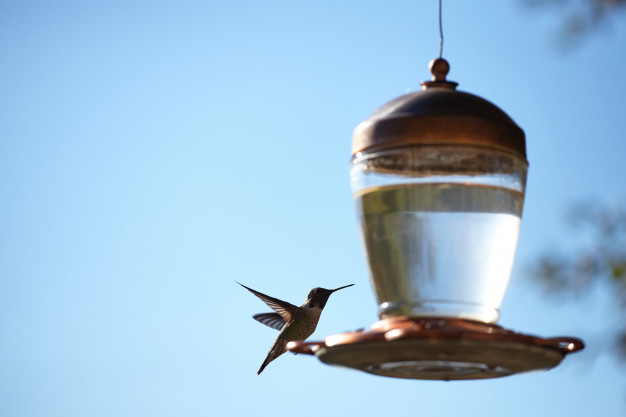The following chart will help you decide what foods to offer to the birds in your location.
|
Wild Bird Species
|
Food of Choice
|
Can also Eat
|
|
Quail, Pheasants
|
Cracked Corn
|
Millet, Berries
|
|
Pigeons, Doves
|
Millet
|
Sunflower, Milo, Bread, Nuts, Cracked Corn, Thistle
|
|
Roadrunners
|
Meat Scraps
|
Suet
|
|
Hummingbirds
|
Plant Nectar, Small Insects
|
Sugar Water, commercial instant nectars
|
|
Woodpeckers
|
Suet , Meat Scraps, Insects
|
Fruit, Nuts, Sunflower Seed , Sugar Water
|
|
Jays
|
Whole Peanuts,Peanut Kernels
|
Sunflower Seed, Suet , Bread Products, Cracked Corn
|
|
Crows, Magpies
|
Meat Scraps, Suet
|
Peanuts, Bread Products
|
|
Titmice, Chickadees
|
Peanut Kernels, Sunflower
|
Sunflower Seed, Suet, Bread Products
|
|
Creepers, Nuthatches
|
Suet,
|
Sunflower, Nuts, Cracked Corn, Bread
|
|
Wrens
|
Suet ,
|
Peanut Butter, Bread Products, Apples
|
|
Mockingbirds, Thrashers
|
Halved Apples, Fruit
|
Bread Products, Suet, Sunflower Seed, Nuts
|
|
Robins, Bluebirds,Thrushes
|
Suet , Mealworms, Berries, Water
|
Bread Products, Raisins, Currants, Nut Meal
|
|
Purple Martins
|
Mosquitoes, beetles, flies, moths
|
Insects, man-made shelter and a water source is important
|
|
Flycatchers, Phoebes
|
Bees, Wasps & Ants
|
Meal Worms
|
|
Kinglets
|
Suet
|
Bread Products
|
|
Waxwings
|
Berries, Raisins
|
Sliced Apples, Canned Peas, Currants
|
|
Warblers
|
Suet , Suet Mix, Water
|
Fruit, Breads, Sugar Water, Nut Pieces
|
|
Tanagers
|
Suet , Fruit
|
Sugar Water, Mealworms, Bread Products
|
|
Cardinals, Grosbeaks, Buntings
|
Sunflower Seed , Safflower
|
Safflower, Apple, Fruits, Suet , Millet, Breads, Peanut Kernels
|
|
Towhees, Juncos
|
Millet, Sunflower Seed
|
Cracked Corn, Peanuts, Bread, Nut Meats
|
|
Sparrows
|
Millet, Peanut Kernels, Suet
|
Bread Crumbs, Canary Seed, Sunflower Seed
|
|
Blackbirds, Starlings
|
Cracked Corn, Milo, Bread, Suet
|
Millet, Suet, Breads, Cracked Corn, Nut Meats
|
|
Orioles
|
Sugar Water, Fruit Pieces
|
Jelly, Suet , Soft Raisins, Orange Halves
|
|
Goldfinches, Finches ,Pine Siskins
|
Thistle/Nyjer Seed,Sunflower
|
Hulled Sunflower, Millet, Fruits, Suet , Peanuts
|
|
Owls, Raptors
|
Small mammals, small birds, lizards, snakes
|
Water
|
Squirrel Proofing
Squirrels can be a real nuisance around a bird feeder. They can jump 6-8 feet to get to your feeder. We carry many styles of feeders designed to keep them away from bird seed, but there are other things you can do to help your existing feeders. In general, position feeders away from buildings, fences, tree trunks and the ground. If your feeder is mounted on a pole, be sure the pole is at least 10 feet from any structure that a squirrel can climb and jump from. Also, put a baffle on the pole that is at least 4 feet up from the ground and right under the feeder.
If the feeder is hanging from a tree, be sure it is more than 4 feet off the ground and 10 feet from the trunk of the tree. Also, put the feeder under a baffle that is preferably at least 18 inches down the chain. These measures should work, but squirrels are ingenius and very determined!
Feeder Location
Hummingbird feeders can be hung close to any window for close up viewing. If you attract so many that they are constantly chasing each other, consider adding a second feeder a few feet away.
For other birds, hang feeders near a tree or large plant, for birds feel somewhat vulnerable when out in the open. Because birds find their food by sight, it can take a while for them to find your feeder. Be patient and be sure to keep the feeder filled with fresh, clean seed. If you are introducing a new feeder to replace an old one, keep both available until the birds get use to the new one.
Why did the finches leave?
There are a few reasons why finches disappear. If they find an abundance of natural food, they will be drawn to that. As it becomes depleted, they will return to your feeder. The other possibilities are easier to check. Carefully inspect your thistle feeder. Has it been cleaned out lately to be sure there isn’t caked seed in it? This is especially important during wet weather. To help keep the seed from caking in wet weather, try adding a small amount of uncooked rice to the seed. Also, is the seed dried out? Replace with fresh seed in a well cleaned feeder and your finches should come back.
Water
Birds are always attracted to a good water source for both drinking and bathing. In winter, a heated birdbath will keep ice from forming. For the rest of the year, bird baths offer lots of enjoyable viewing as birds come and go. Be sure to keep them filled with clean water. If you can’t use a bird bath, you can certainly improvise. Use any shallow container that can be kept full of clean, fresh water.




